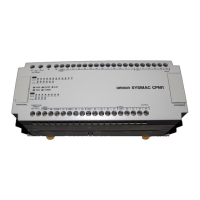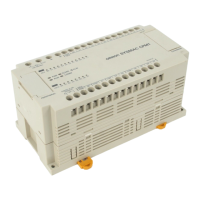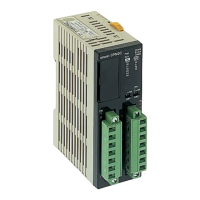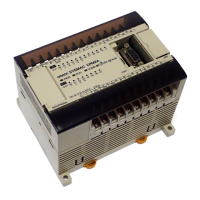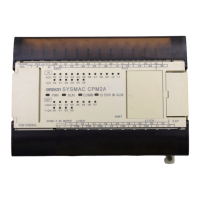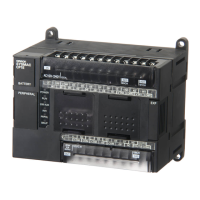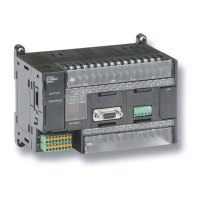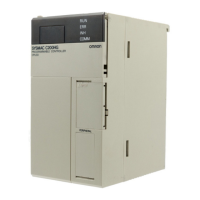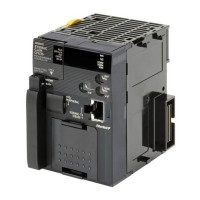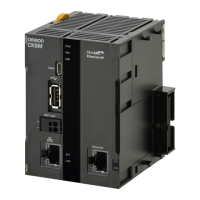90
4-3 Programming Console Operations
4-3-1 Overview
The following table lists the programming and monitoring operations that can be
performed from a Programming Console. Refer to the rest of this section for
details on operational procedures.
Name Function Page
Clearing memory Clears all or part of the Program Memory and any data areas that are not
read-only, as well as the contents of the Programming Console’s memory.
91
Clearing memory completely Clears all of memory, including the user program, PC Setup, all data areas,
and the I/O comment area (set with version 2.0 or later of CX-Programmer).
92
Reading UM allocation
information
Reads the I/O comment area and user program area capacities when an I/O
comment area has been set with version 2.0 or later of CX-Programmer.
92
Reading/clearing error
messages
Displays and clears error messages and displays MESSAGE instruction
messages.
92
Buzzer operation Turns ON and OFF the buzzer that sounds when Programming Console keys
are pressed.
93
Setting a program memory
address
Sets the specified program memory address when reading, writing, inserting
and deleting programs.
94
Reading a program memory
address/monitoring bit status
Reads the contents of the Program Memory. Displays the status of the
currently displayed bit in PROGRAM and MONITOR modes.
94
Instruction search Finds occurrences of the specified instruction in the program. 98
Bit operand search Finds occurrences of the specified operand bit in the program. 98
Inserting and deleting
instructions
Inserts or deletes instructions from the program. 99
Entering or editing programs Overwrites the contents of the current Program Memory to either input a
program for the first time or to change a program that already exists.
95
Checking the program Checks for programming errors and displays the program address and error
when errors are found.
100
Bit, digit, word monitor Monitors the status of up to 16 bits and words, although only 3 can be shown
on the display at one time.
101
Multiple address monitor Monitors the status of up to 6 bits and words simultaneously. 102
Differentiation monitor Monitors ON-to-OFF or OFF-to-ON changes in the status of a particular bit. 103
Binary monitor Monitors the ON/OFF status of any word’s 16 bits. 103
Three-word monitor Monitors the status of three consecutive words. 104
Signed decimal monitor Converts the contents of the specified word from signed hexadecimal (two’s
complement format) to signed decimal for display.
105
Unsigned decimal monitor Converts hexadecimal data in a word to unsigned decimal for display. 105
Three-word data modification Changes the contents of one or more of the 3 consecutive words displayed in
the Three-word Monitor operation.
106
Changing timer, counter SV 1 Changes the SV of a timer or counter. 106
Changing timer, counter SV 2 Makes fine adjustment changes to the SV of the timer or counter. 107
Hexadecimal, BCD data
modification
Changes the BCD or hexadecimal value of a word being monitored. 107
Binary data modification Changes the status of a word’s bits when the word is being monitored. 108
Signed decimal data
modification
Changes the decimal value of a word being monitored as signed decimal data
within a range of –32,768 to 32,767. The contents of the specified word are
converted automatically to signed hexadecimal (two’s complement format.)
109
Unsigned decimal data
modification
Changes the decimal value of a word being monitored as unsigned decimal
data within a range of 0 to 65,535. A change to hexadecimal data is made
automatically.
110
Force set/reset Forces bits ON (force set) or OFF (force reset.) 110
Clear force set/reset Restores the status of all bits which have been force set of reset. 111
Programming Console Operations
Section 4-3
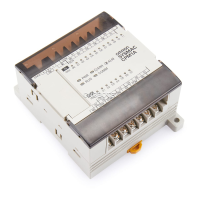
